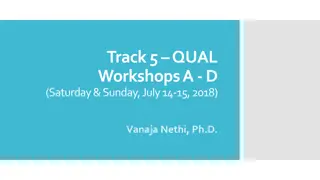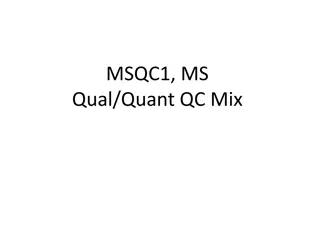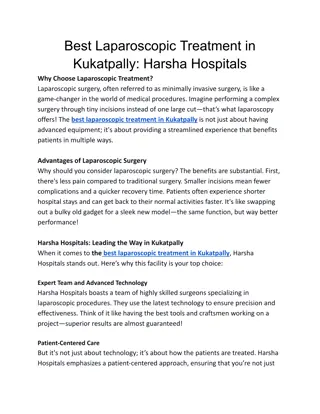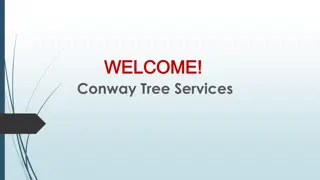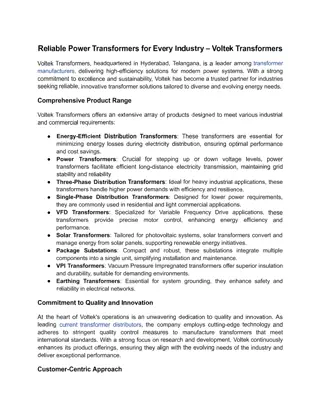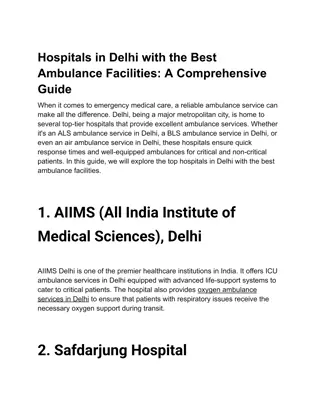
Quantitative and Qualitative Approaches in Data Collection
Delve into the nuances of quantitative and qualitative data collection methods in social science research. Learn when to apply each approach based on the types of questions being explored and the outcomes desired.
Uploaded on | 5 Views
Download Presentation

Please find below an Image/Link to download the presentation.
The content on the website is provided AS IS for your information and personal use only. It may not be sold, licensed, or shared on other websites without obtaining consent from the author. If you encounter any issues during the download, it is possible that the publisher has removed the file from their server.
You are allowed to download the files provided on this website for personal or commercial use, subject to the condition that they are used lawfully. All files are the property of their respective owners.
The content on the website is provided AS IS for your information and personal use only. It may not be sold, licensed, or shared on other websites without obtaining consent from the author.
E N D
Presentation Transcript
Quantitative and qualitative approaches to generate data
Learning outcomes Know the difference between qualitative and quantitative data collection approaches to social science research Know when to apply these different approaches, including to which types of questions
Quantitative vs Qualitative How are quantitative methods different to qualitative methods?
Quantitative approaches Use quantitative methods when you want to know how many and/or how often Work with numbers Generally uses surveying of a large group of people and a structured questionnaire that contain predominantly closed-ended questions Can test theories you have about a situation Analysis often uses statistical methods The more representative the sample is - the more likely it can be generalised to a wider population
Quantitative approaches Often leaves gaps in information - including around 'why' and 'how' Number-based estimates Strengths Close-ended questions and tools limit outcomes, and response options are based on the selection of the researcher. So results might not always represent the actual situation Opportunity for relatively uncomplicated data analysis Labour intensive and resource-heavy data collection process The accuracy of the data can be checked Weaknesses Usually, there is limited participation by affected persons in the development of questions and in the way the information collection process flows Can compare data between different communities within different locations Method least likely to lead to relationship-building for community engagement.
Qualitative approaches Use qualitative method when you want to know how people feel and what they think. You don t need to know how many people think or feel this way. Not based on numbers Generally use interviews, focus groups discussions and observations More xploratory (e.g. looking at factors such as social/cultural expectations, gender roles, ethnic and religious implications and individual feelings) Usually uses a smaller sample size than quantitative approaches Provide data that are usually rich and detailed, offering many ideas and concepts to inform your program
Qualitative approaches Rich and detailed information about affected populations and the impact of the emergency Results in data which the accuracy of the data cannot be objectively checked Strengths May require a more labour intensive analysis process (categorisation, recoding, etc.) Perspectives of specific social and cultural contexts (i.e. the human voice of the disaster) Needs skilled interviewers to successfully carry out the primary data collection activities Opportunity for more active participation in the research process and community engagement Flexible and open tools means that the focus of research can be adjusted if appropriate Requires a detailed dissemination and visualisation plan (data is text and words not percentages and graphs) Weaknesses A data collection process which requires limited numbers of respondents Data does not as easily translate (as numbers) into PowerPoint presentation Potentially more time intensive for recipients of this information to take in detailed findings A data collection process which can be carried out with limited resources
Why are quantitative approaches important? Allow a sharper focus on specific questions Can provide findings which are widely applicable Allows for the comparison of data between different communities within different locations
Why are qualitative approaches important? Allow an understanding of why and how affected people and communities cope with and are impacted by an emergency Give us an opportunity to listen to people Help to start a dialogue/conversation with people affected by an emergency situation Can help to build relationships, acceptance and trust among the crisis affected population Better able to identify local resilience mechanisms for responding to crisis which can be supported
Summary Qualitative and quantitative methods are both helpful. They allow us to address different sorts of questions. o Use quantitative methods when you want to know how many and/or how often o Use qualitative methods when you want to know how people feel and what they think
Summary Quantitative methods are important during an emergency because they: o Allow a sharper focus on specific questions o Can provide findings which are widely applicable o Allow for the comparison of data between different communities within different locations Qualitative methods are important during an emergency because they: Allow an understanding of why and how affected people and communities cope with and are impacted by an emergency Give us an opportunity to listen to people Help to start a dialogue/conversation with people affected by an emergency situation o o o

